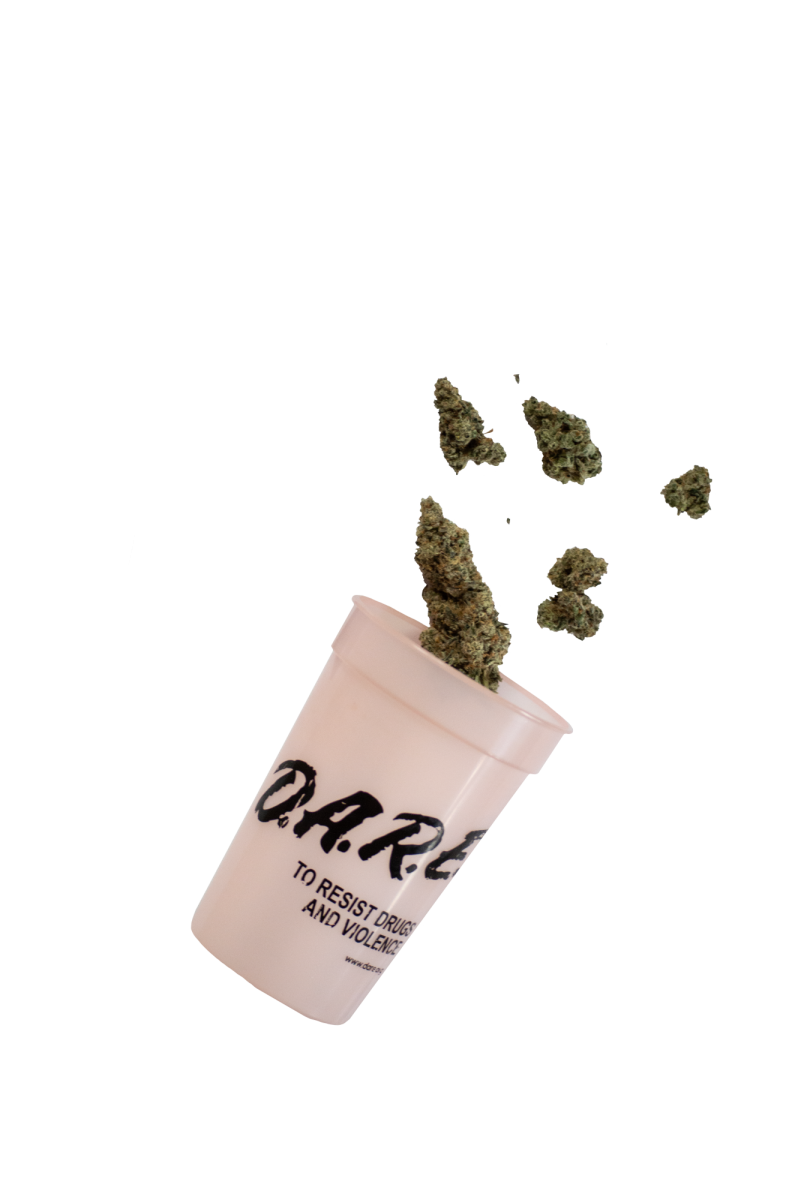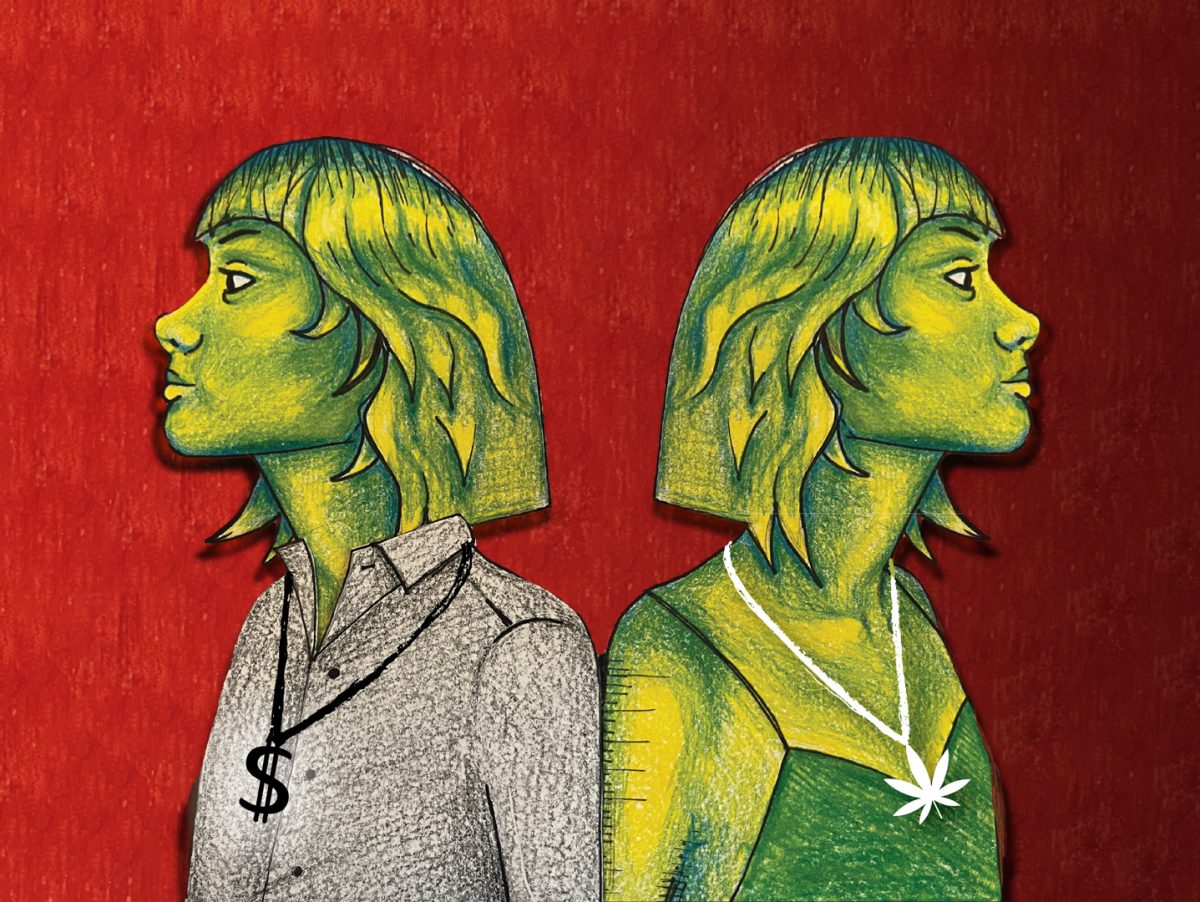In 1986, the popular children’s show character Pee Wee Herman, with his goofy high voice and red polka dot bowtie, barrelled a TV camera in a dark room holding up a vial of crack cocaine. In one of the character’s rare moments of seriousness, he addressed millions of television viewers as he gave a PSA about drug use.
“This is crack. Rock cocaine. It isn’t glamorous, or cool, or kid stuff.” The camera zooms in closer to him as he tells the camera that crack is deadly and addictive before the shot switches to the vial by itself, captioned “Don’t even try it.” This character, who is known for jumping around, annoying parents, and talking to furniture, is now telling children about their mortality.
Another thing that isn’t glamorous, cool, or kid stuff is that in the 1980s, due to the crack epidemic and how it was handled, mortality rates took a nosedive, and incarceration rates skyrocketed, specifically in teen Black male populations. Believe it or not, Pee Wee Herman did not save the human race.
This is the story of the crack epidemic, the Reagans, Drug Abuse Resistance Education (DARE), and figuring out the real “Public Enemy Number One.”
In June of 1971, with heroin and cannabis usage on the rise as a result of the Vietnam War, Richard Nixon famously told Americans that drugs are “public enemy number one” and “that in order to fight and defeat this enemy, it is necessary to wage a new, all-out offensive.” For many, this is considered to be the beginning of the “War on Drugs,” where millions of dollars per year were shelled out to prisons, the military, prohibition and other new regulations, and foreign assistance to combat this war and “fight” the enemy. Nixon officially criminalized many drugs, created the mandatory prison sentence for drug possession, increased federal funding for drug abuse-related programs, and created the Drug Enforcement Agency (DEA). He also signed the act that regulates and classifies the five schedule system (where he classified the most dangerous drugs as cannabis, heroin, and LSD — Schedule I — and the least dangerous as cough syrup and Tylenol – Schedule 5).
By the 1980s, there was a new drug on the market and a new president in the White House. Crack, or “rock cocaine,” was a new form of cocaine that was white, crystalized, and smokable. It was very cheap to buy ($5-$20 per vial), super easy to make, instantly effective and ultra addictive. Because of its convenience, the substance fell predominantly into the grasp of many poor Black neighborhoods in California, New York and Detroit. When crack arrived, the scene was highly competitive. As a result, groups of people selling it established their own areas and took up arms to defend themselves — this associated crack cocaine and crack users with violence and gang activity.
A New York Times article from 1982 cites a study that found that one-third of the nation’s Black people and one-quarter of the nation’s Hispanic people lived below the poverty line. This number remained throughout the decade. Studies also found that 80% of crack users were poverty-stricken Black people who lived in these areas. Most of the people who sold crack were teen males.
After a brief pause on the war on drugs with the Carter administration (who actually aimed to decriminalize cannabis), Ronald Reagan was elected in 1981 and was ready to come in full swing.
“Drug abuse is a repudiation of everything America is. The destructiveness and human wreckage mock our heritage,” Reagan said in a 1986 public address.
But before we get to him, let’s talk about Mrs. Reagan because the ‘80s would not be the ‘80s without her. She created the “Just Say No” campaign in 1981. This was an effort directed toward schoolchildren that aimed to curb drug use before it even started. Throughout Reagan’s eight years in office, Nancy traveled to classrooms all over the country with “Just Say No” to proudly declare those three words to children everywhere, traveling to 28 states, and London and Mexico by 1986. Surprisingly enough, drug use couldn’t single-handedly be stopped before it started, with a religious Republican woman in her 60s just telling young children not to smoke crack (she needed to work on her charisma).
So, in 1983, she created Drug Abuse Resistance Education (DARE), which was a much wider effort aimed at bringing drug education into the classroom. With Daren the Lion as a mascot and plenty of merch to go around, this was sure to curb drug abuse and put an end to it before it even reached Generation X. Going into effect in schools throughout the country, the program allotted school time to bring a police officer into classrooms with actual samples of real drugs (everything from alcohol to heroin), and educate children on their effects and geographical location.
DARE and “Just Say No” also had funding for PSAs and they partnered with children’s television shows at the time to have anti-drug and alcohol messaging (this is why every 90s sitcom has the “peer pressure” episode with 13-year-olds drinking booze and smoking cigarettes in the middle school bathroom). This is where Pee Wee comes in. Again, in the commercial, he holds up a vial of crack, says what it is and its nickname, and tells you how addictive it is. Kirk Cameron from the show “Growing Pains” breaks the fourth wall at the end of an episode and tells his tween audience that doing cocaine at parties when everyone else is doesn’t make you cool. There’s a famous advertisement of a hand holding an egg saying, “This is your brain,” and then cracking it into a frying pan with the phrase, “This is your brain on drugs.”
“‘Just Say No’ sounds just fine as the advice given to privileged youngsters who are offered candy by strangers. But when the First Lady suggests the phrase as a final solution to youthful drug abuse, it smacks of a gross ignorance of street addiction, peer pressure, and the agony that drives poor children, especially, to the bottle, the needle, and the pipe.” — Les Payne, Detroit Free Press, 1986
Back to Mr. President: Some things Ronald did in his first couple years of administration involved “pool[ing] the resources of nine federal agencies, including the military, with state and local authorities,” and sending them to South Florida to stop drug trafficking there. He also created the Organized Crime Drug Enforcement Resources, which was confirmed to be targeted specifically at Black people. The government also seized 20 tons of cocaine throughout the US in 1985, compared to 2 tons of
cocaine in 1981.
But nothing compares to the Anti-Drug Abuse Act of 1986. Funding for Drug Enforcement jumped from $700 million to $1.7 Billion; he increased minimum drug sentences and lowered restrictions on property seizure. He established criminal penalties for any amount of possession of a controlled substance, and he established that anyone under the age of 18 selling drugs will be tried and charged as an adult.
The most significant part of this act was that it created the 1-100 minimum sentencing policy for crack, which meant that anyone who was caught with, say, five grams of crack would serve five years in prison. Consequently, anyone with 500 grams of cocaine would serve five years in prison. To reiterate, cocaine was very expensive and associated with the rich, while crack was very cheap and associated with the Black and impoverished. The War on Drugs targeted small-time drug dealers in impoverished black communities. By the end of the 1980s, 1 in 4 Black males in their 20s was serving time or on parole. In 1995, that number increased to 1 in 3.
There is study after study that proves that DARE and Just Say No didn’t work, but this one from 2004 says it all:
“Objectives. We provide an updated meta-analysis on the effectiveness of Project D.A.R.E. in preventing alcohol, tobacco, and illicit drug use among school-aged youths…Results. The overall weighted effect size for the included D.A.R.E. studies was extremely small… and nonsignificant.”
The crack epidemic died down by the end of the 1990s, and in 2001 — when DARE was implemented in 75% of US school districts — the surgeon general declared DARE ineffective. Who knew that a cartoon lion telling eight-year-olds all day what drugs are, how they make you feel, and that everybody thinks they’re cool wouldn’t stop kids from trying them later? Anyways, crack is whack.







